Today it takes only a blink of an eye to send a message to someone miles away on an electronic device, but before the popularisation of modern telecommunications in the mid-19th century, long-distance communication could take days if not weeks to achieve. With its prime location in central London and necessity for maintaining close ties with its members, Middle Temple was among the first to tap into the benefits brought by the development of modern telecommunications.
Long-distance communication in London in the late 1840s was completely revolutionised with the advent of electrical telegraph. A sender’s message, after being transmitted through wires between two distant stations, could now be delivered to the receiver by hand at an unprecedented speed. Telegraph stations were nearly omnipresent in the capital at that time – Temple was then served by at least two in its proximity, both located on Fleet Street.


Receipt from the Electrical and International Telegraph Company for sending a message at the Fleet Street station, with telegraph station addresses and service charge information at the back, 1859 (MT/2/TUT/124)
In 1860, one major player, the London District Telegraph Company, applied to the Middle Temple to establish a station within Temple, hoping it would be found ‘useful to members of the legal profession’. The Inn’s surveyor, however, recommended against this due to a lack of vacant space, adding that ‘an office in Fleet Street would be almost as convenient to the Temple as one within their own precincts.’
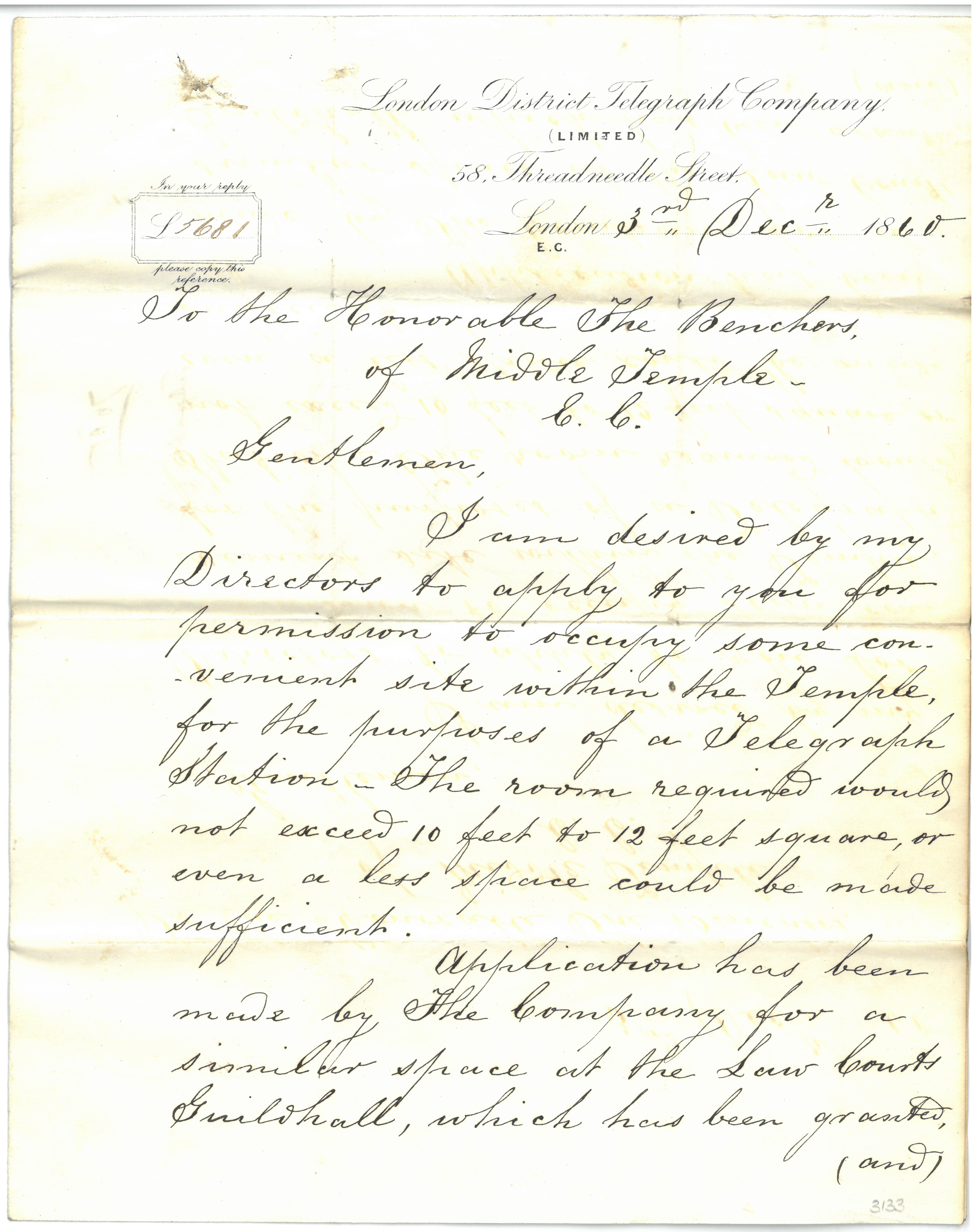
Extract of the letter from London District Telegraph Company seeking permission for setting up a telegraph station in Temple, 1860 (MT/1/PPA)
The surveyor’s assessment was plausibly convincing. Telegraph was utilised by many to communicate unforeseen and often last-minute changes, and Middle Templars were no exception. An on-the-day notice of absence for Call was given by a member Pandit Srilal in the afternoon of 13 June 1888 via a telegram, which arrived at Fleet Street from Notting Hill in less than 15 minutes and would likely have left the Inn’s staff sufficient time to make necessary arrangements before the ceremony. Similarly, the Inn’s message to another member Frederick Wood about his ineligibility for the imminent Call took only half an hour to send up north to Lancashire. These messages were often written in a highly condensed style, omitting the formalities of an official letter, as sending fee was charged according to number of words, plus the porterage fee incurred from delivery.
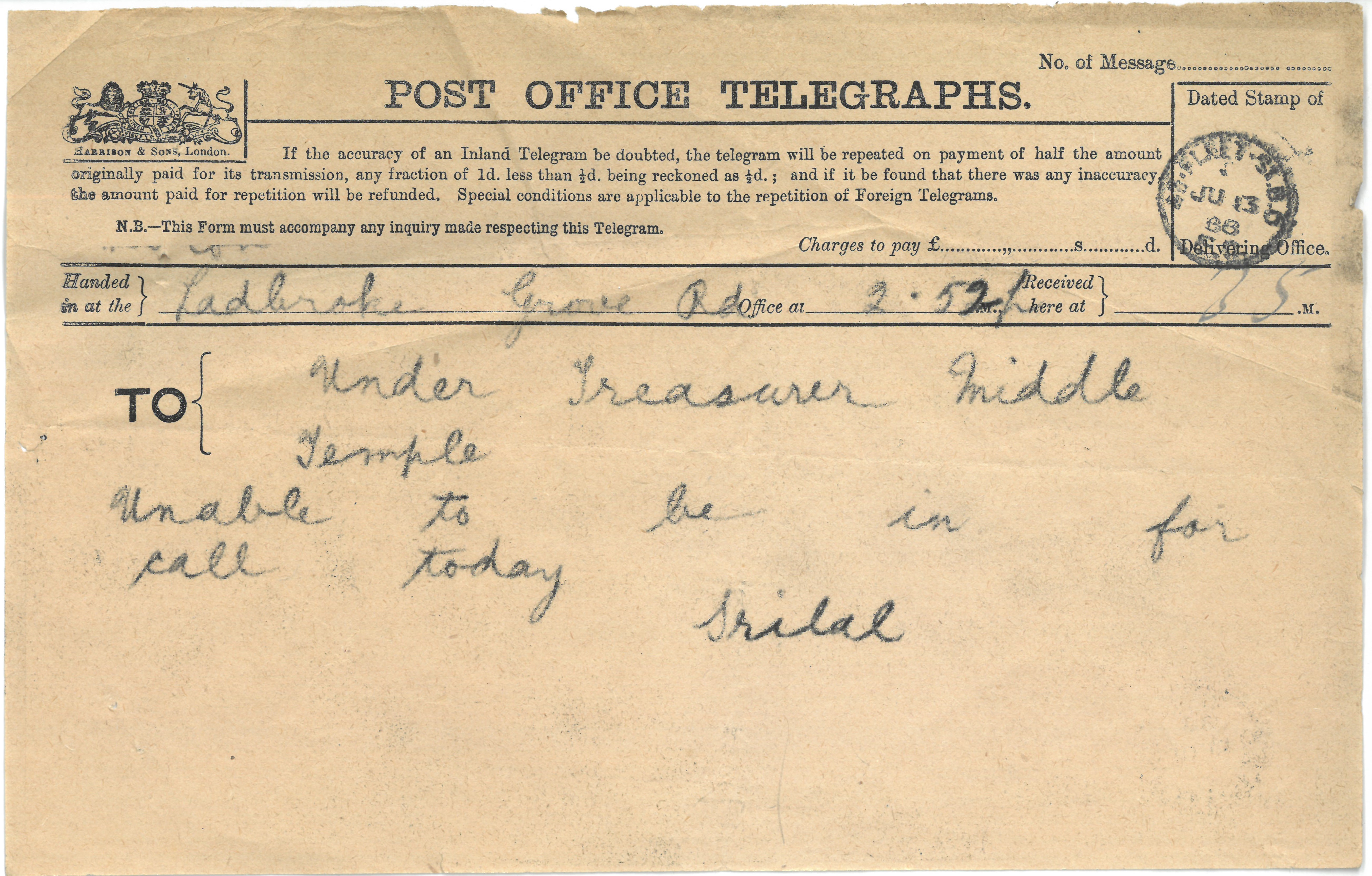
Post Office telegram from [Pandit] Srilal giving notice for his absence for Call on the day, 1888 (MT/1/PPE/6)
Telegraph quickly became an important vehicle for improving efficiency in communication around the capital, but in a few decades Middle Templars would find themselves having to make sense of another telecommunication invention – one based on verbal communication and which would outpace any written conversation.
In February 1880, a few months after the Telephone Company opened Britain’s first public telephone exchange in London, the Inn signed an agreement to allow the company to bring in the telephone wires. Several other agreements soon followed in the decade as more Middle Templars applied to subscribe to the telephone system. Chambers occupied by Richard Webster, the then Attorney General for England, at 2 Pump Court and by Master John Bigham, who would later become the Treasurer in 1906 and lead the inquiry into the sinking of RMS Titanic in 1912, in Goldsmith Building were among the earliest to connect to the company’s telephone exchange.
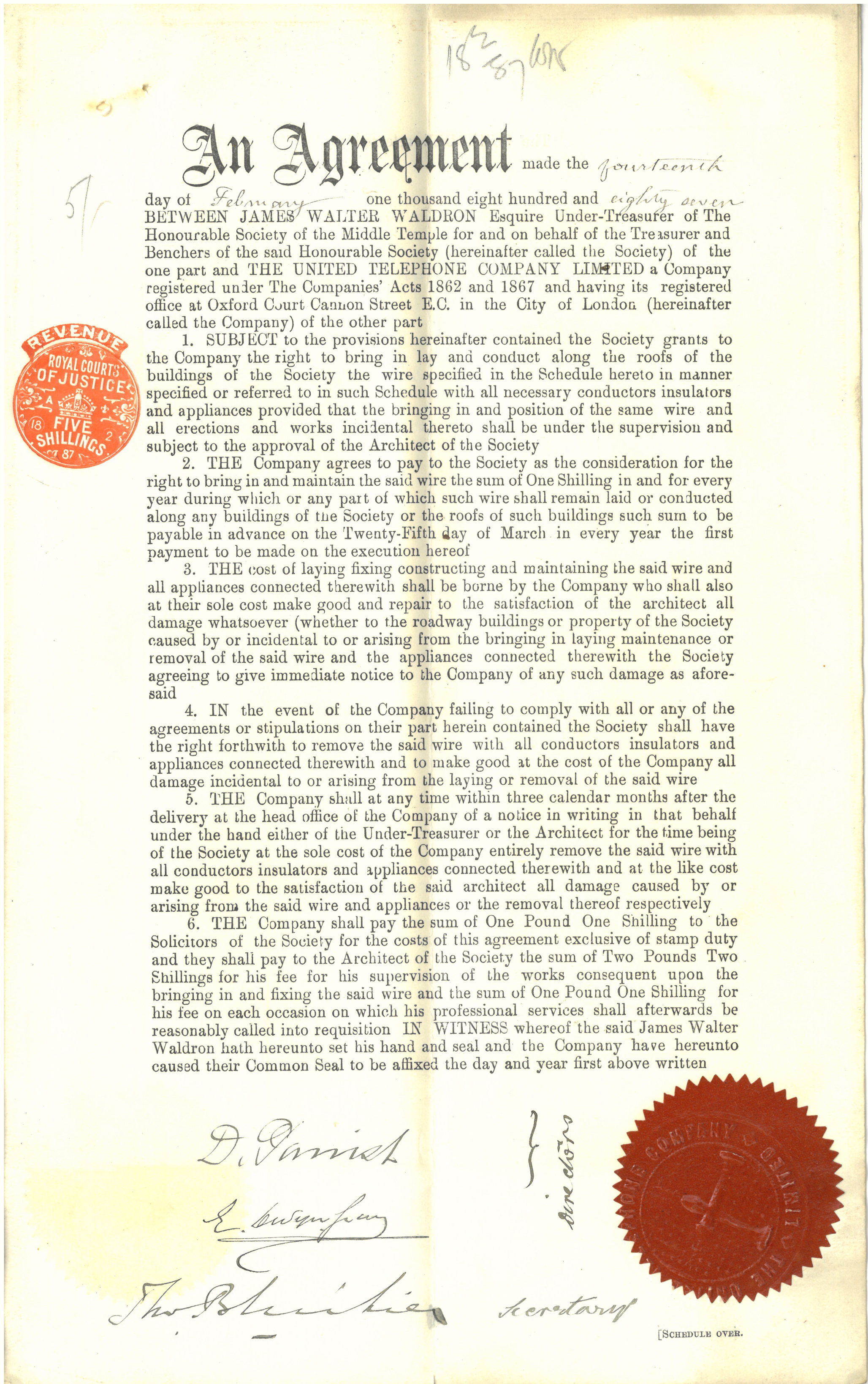

Agreement with the United Telephone Company on wiring a chamber in New Court, with a plan illustrating the route of the wire with a red line, 1887 (MT/21/1/70)
Apart from the private telephones owned by individual chambers, records show that by the late 1890s there was a shared telephone in the Reading Room of Inner Temple, available for use by members of the Bar. Similar arrangements might have been made at the old Middle Temple Library at that time, but the provision of telephones in Temple clearly failed to meet the demand of its thriving legal business. In summer 1898, Henry Bingley, Secretary to the General Council of the Bar, wrote to the Under Treasurer relaying the request from a Bar member for setting up public telephone call stations in Temple. Noticing that chamber clerks in Temple would often have to ‘take lengthy journeys into the City to find a telephone to communicate with solicitors’, the member believed such provision would help relieve the problem. The Inn’s Parliament, however, ordered that consideration to this matter be adjourned.
It appears that during the infancy of public telephone system only a handful of chambers in Temple had subscribed to the service. Approaching the turn of the century, however, circumstances had changed, as Temple came to be considered a strategic location by the General Post Office (GPO) in its ambitious plan to provide a full telephone system for London. In late 1899 the GPO submitted a proposal to the Masters of the Bench for running their wires through Middle Temple Lane from the Embankment to serve Fleet Street, the Strand and, by effect, Middle Temple. Competition with other independent telephone companies, to which the GPO granted a license to operate, seemed to drive their high hopes for obtaining the Inn’s permission, which was at first unsuccessful.
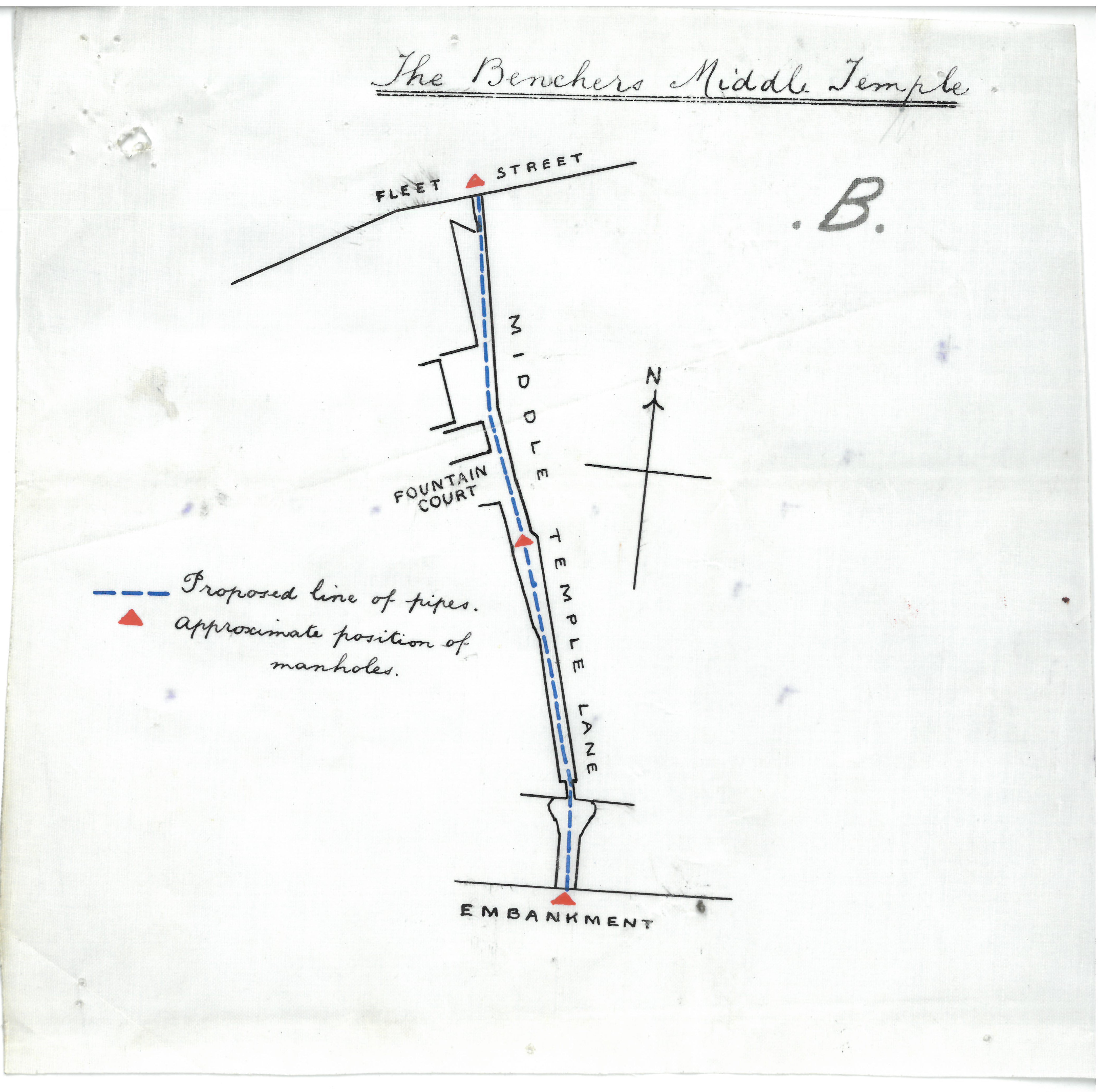
Plan illustrating the General Post Office’s proposed work along Middle Temple Lane, 1899 (MT/1/HAS/1)
The Inn’s hesitation in accepting the proposal was perhaps due to the way that wires were to be brought into Middle Temple. While the Telephone Company used an open wire system to connect cables on the rooftop of chambers, the GPO opted for an underground system, which would require the opening of pavement to lay pipes carrying the cables. The fact that some chambers were already supplied by the National Telephone Company, the successor of the Telephone Company, might also explain why the Inn was less willing to engage another service provider. After deliberation, the Inn inclined to the surveyor’s view in his 1902 report that the GPO’s planned work on Middle Temple Lane would cause members ‘a great deal of inconvenience and annoyance’, and thus rejected their proposal.
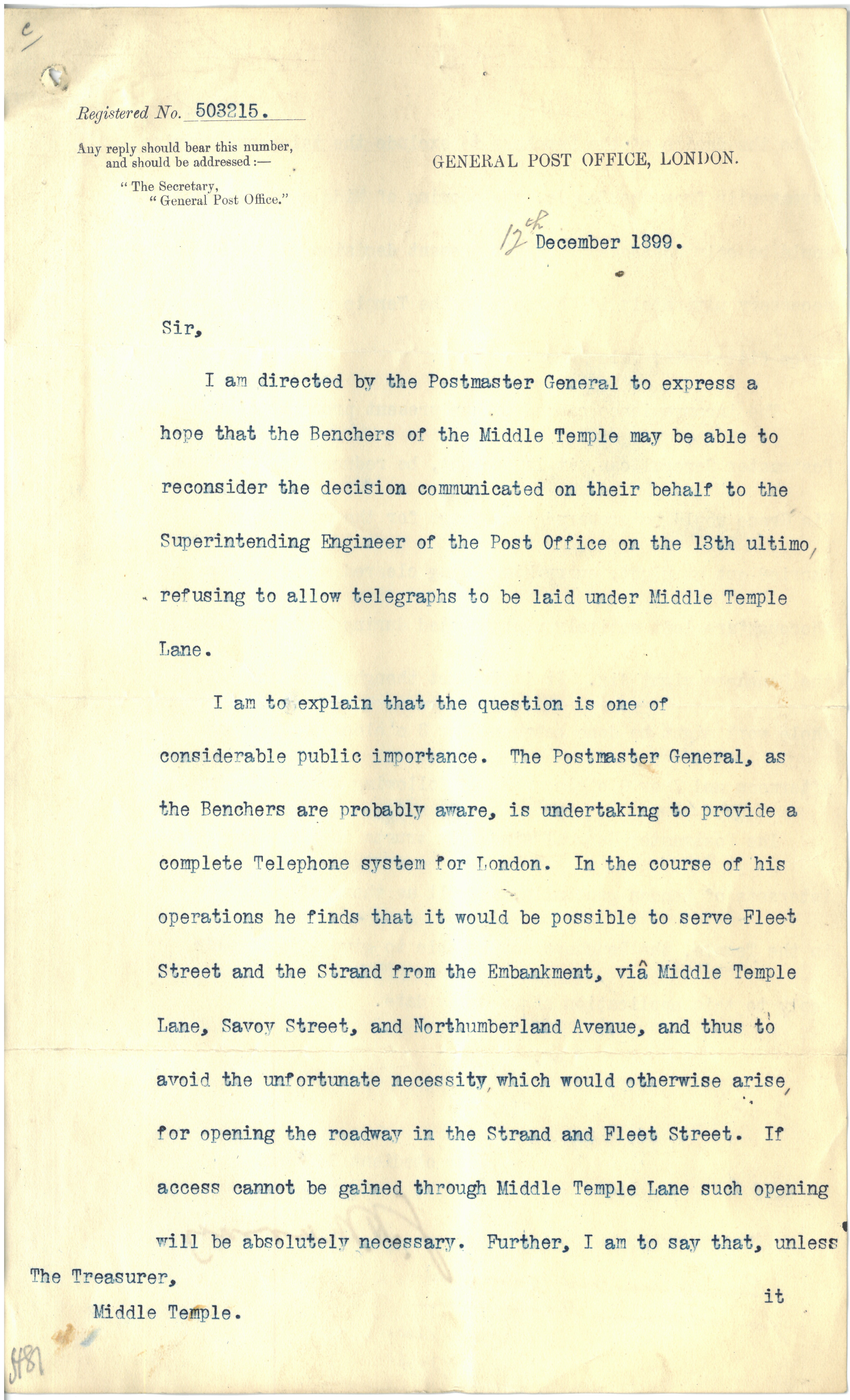
Extract of the letter from the General Post Office appealing for the Inn's reconsideration of their proposal, 1899 (MT/1/HAS/1)
The monthslong negotiation between the two parties worried some anxious tenants who had already subscribed to the GPO system. One such tenant, Evans Austin, a barrister occupying a chamber at 6 Pump Court, wrote in March 1902 that the delay in getting a telephone installed in his chamber was causing him ‘considerable inconvenience’, adding that he would make immediate arrangements with the National Telephone system in case the GPO was not allowed to operate in Temple.
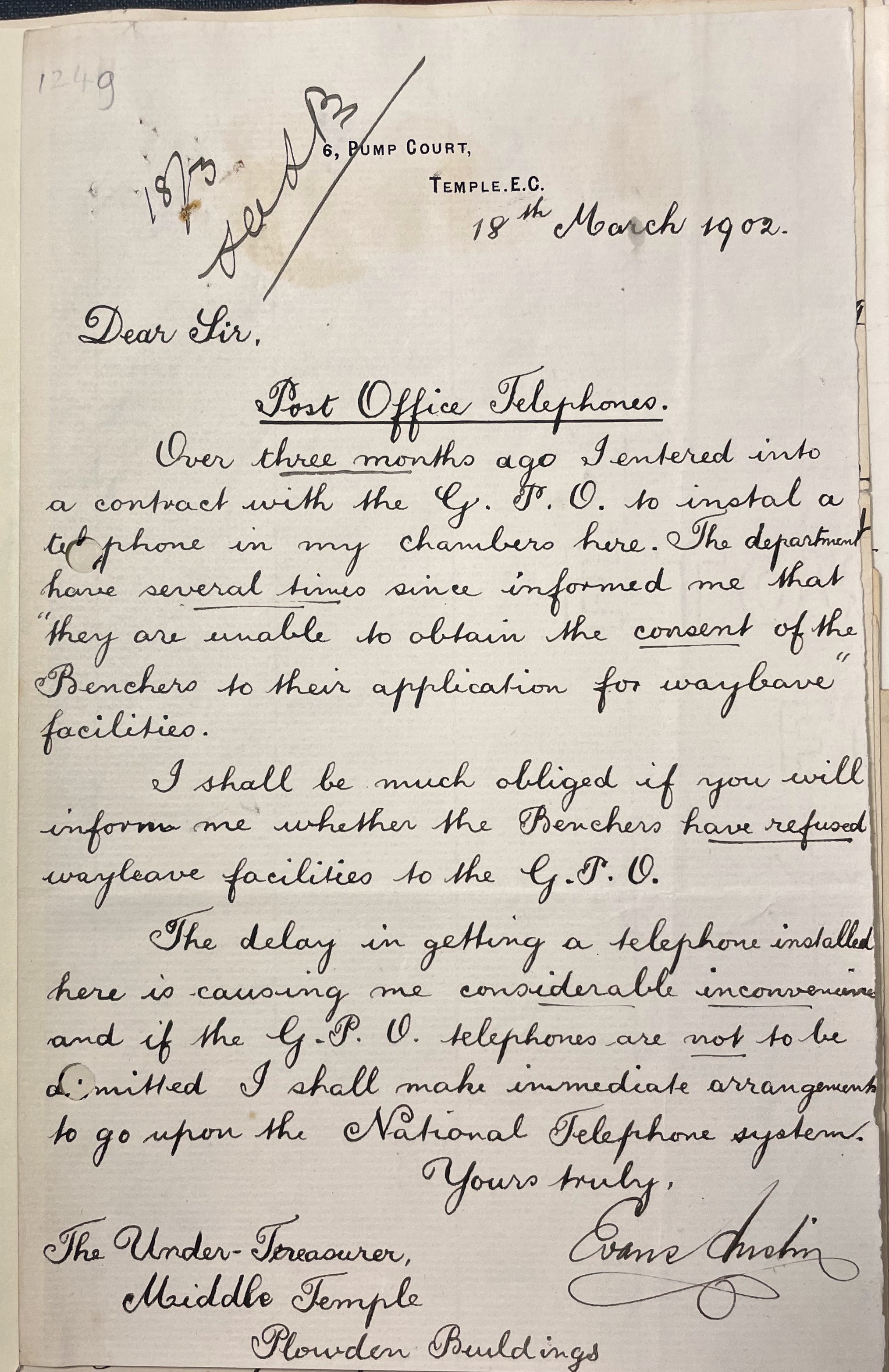
Letter from Evans Austin, occupier at 6 Pump Court, enquiring the Inn’s decision regarding the General Post Office’s provision of telephone service within Middle Temple, 1902 (MT/1/PPA/33)
It was only in summer 1902 when news came that Inner Temple was prepared to enter an agreement with the GPO on telephone service that Middle Temple reconsidered their proposal, which had now scaled up to cover the whole Temple area. Perhaps recognising what the GPO called the ‘distinct advantage if the Temple could be dealt with telephonically as a whole’, the Inn soon made a resolution to allow their wires to be brought into Middle Temple on certain terms, which the GPO gladly accepted. This would have been a relief for Temple subscribers of the GPO system too, including the aforementioned tenant Evans Austin, who was assigned a four-digit telephone number ‘4667’ as shown in the Post Office Directory.
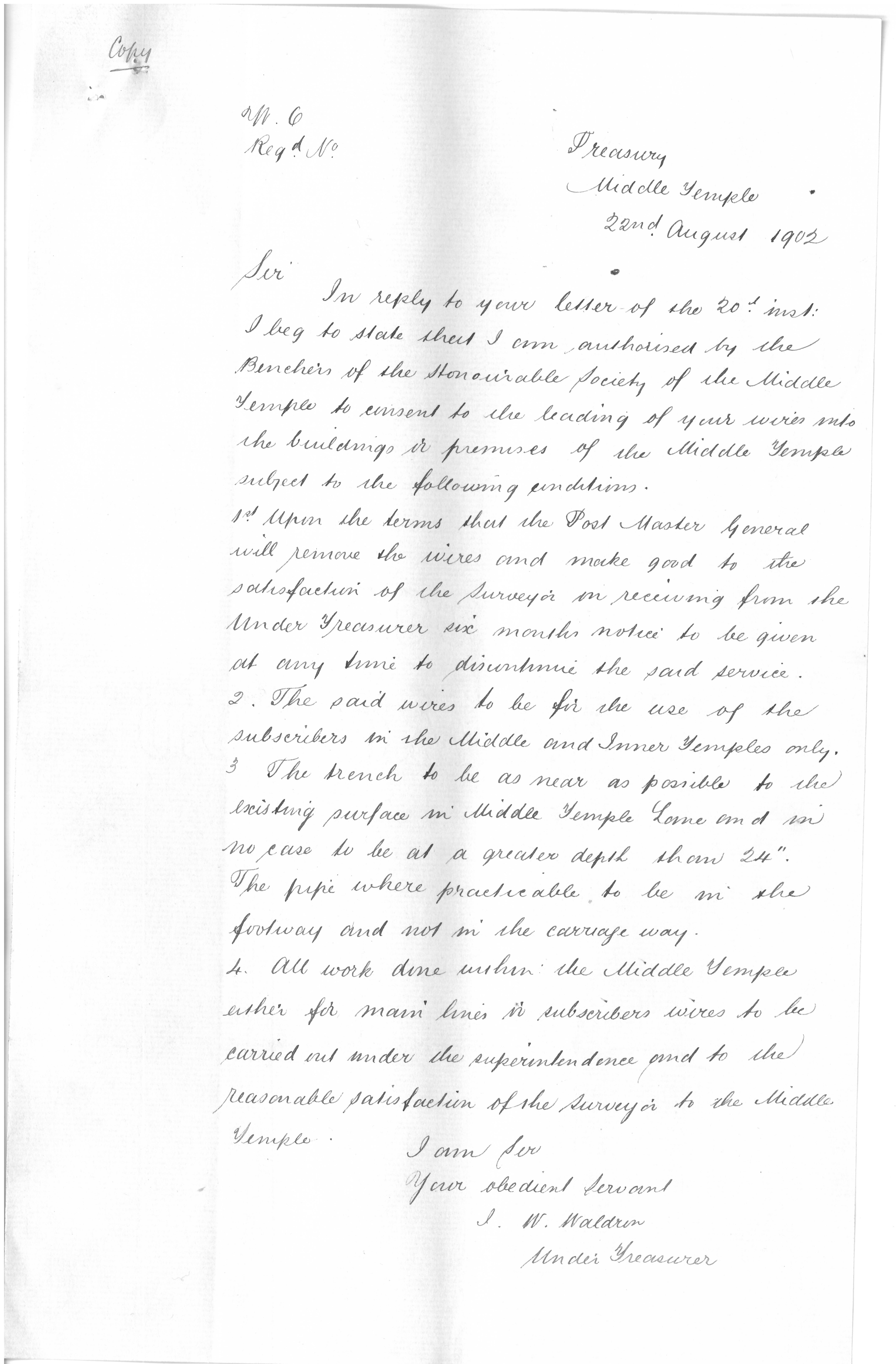
Treasurer’s letter to the General Post Office setting out the conditions for the acceptance of their telephone service proposal, 1902 (MT/1/HAS/1)
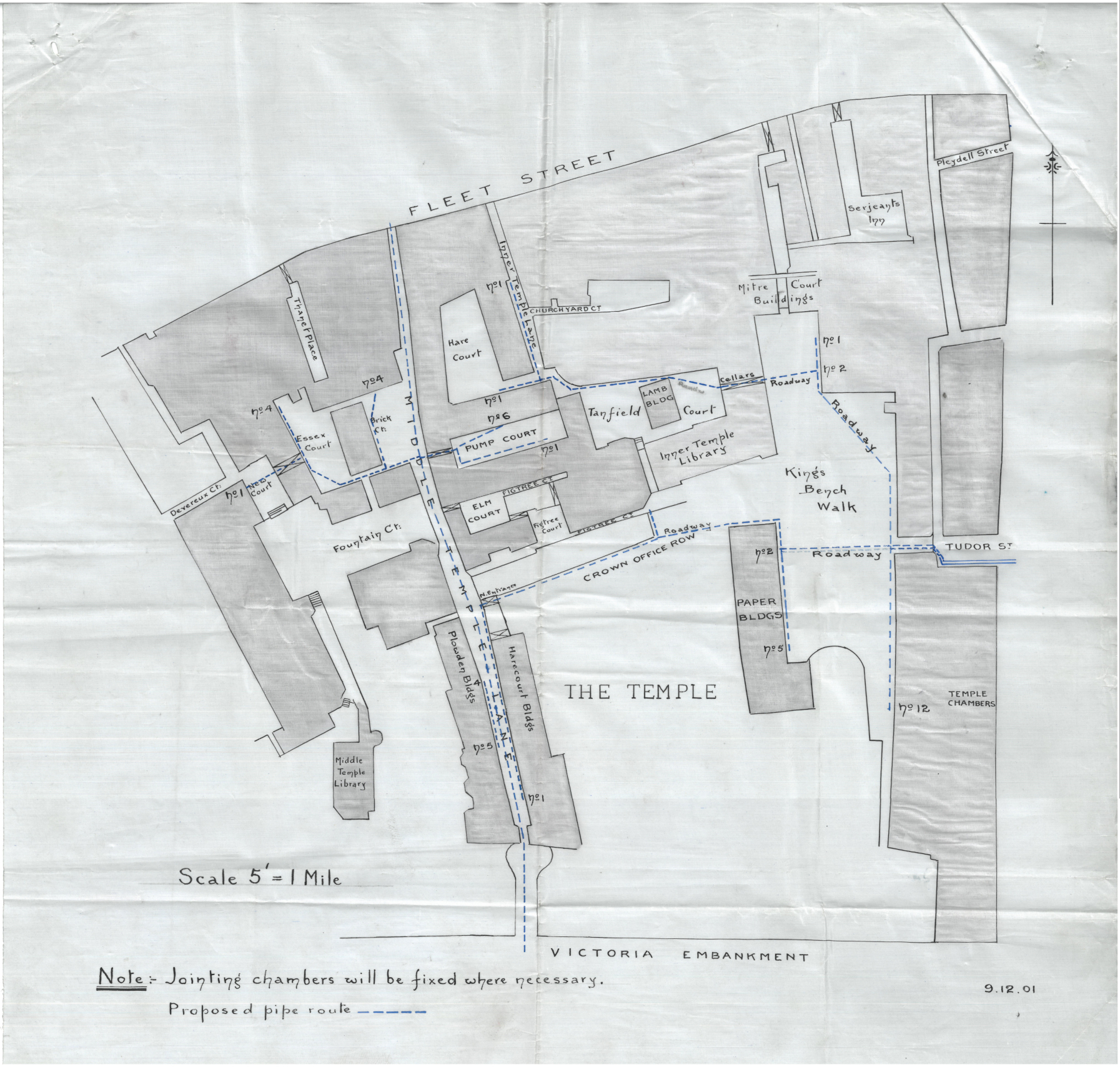
The General Post Office’s revised plan to bring in underground wires across the Temple area, marked with blue dotted lines, 1902 (MT/1/HAS/1)
Although the GPO secured a slice of the Temple’s telephone business, the Inn continued to receive applications from the National Telephone Company for connecting chambers to their system. A large number of these applications dating from 1908 to 1911 survive in the Archive, and each set of those would include the company’s application letter, a surveyor’s report and a blueprint indicating the route of the wire. Also surviving, printed at the underside of the application letter, is the company’s rate card, which shows that options for telephone subscription plans were as varied as today. While a modern user would normally gauge the data usage when selecting a plan, a century ago one would have to assess the number of calls to be made – as an unlimited service would cost £17 per annum while each call only a penny.
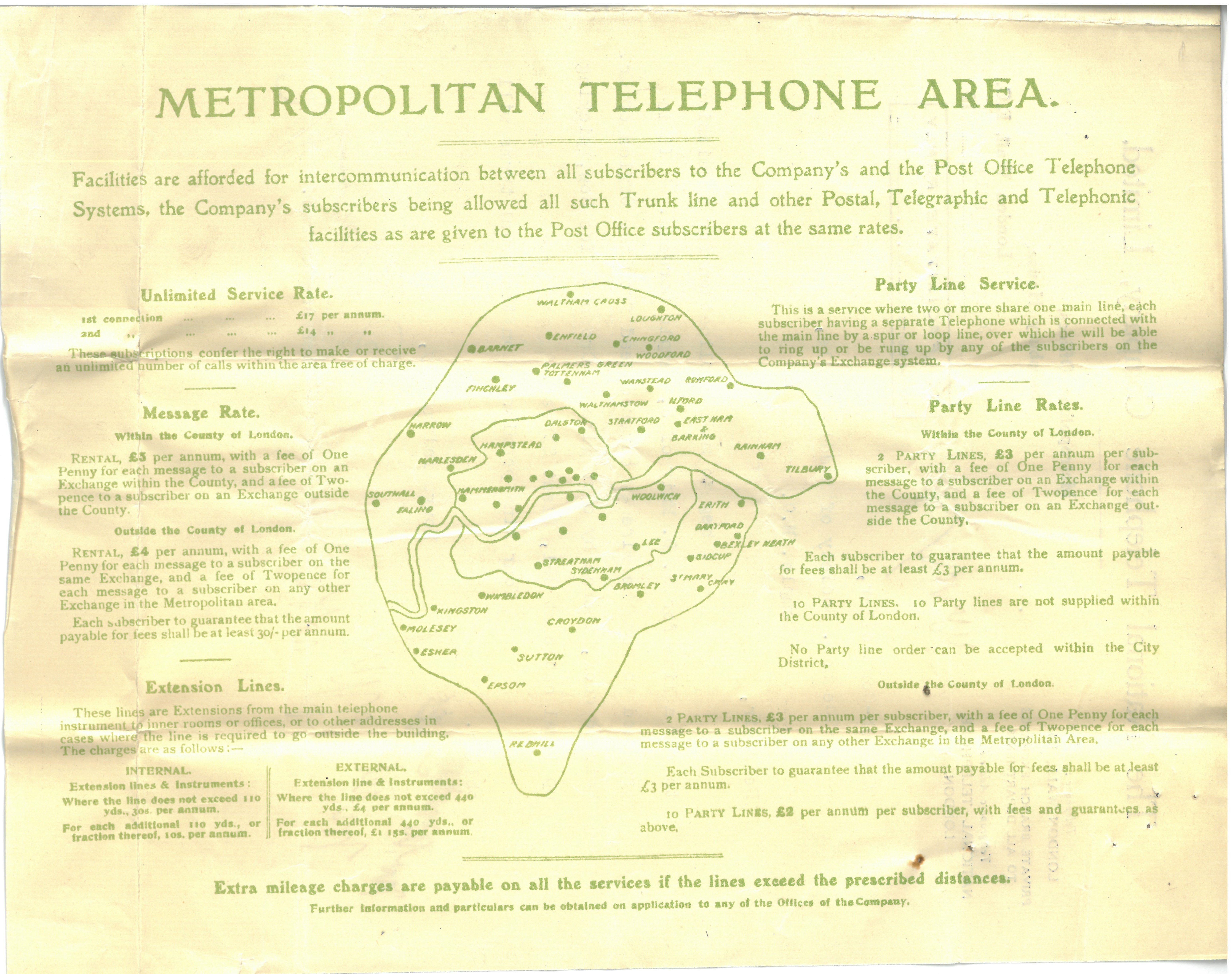
Rate card of the National Telephone Company, found on the underside of their applications to wire chambers in Middle Temple, 1911 (MT/21/1/75/3)
Competition surrounding telephone service provision gradually died down as all independent service providers were eventually taken over by the GPO in 1912. However, the telecommunication industry in London remained highly competitive, and the density of commercial and residential chambers in Temple must have presented a lucrative opportunity to telephone business owners. In 1926 when the Legal and General Life Assurance Company on 10 Fleet Street was considering an extension of their office, pitch letters from companies specialising in lighting work, security system, furniture fittings and office equipment flooded in, among which there was a fair number of brochures and advertisements relating to telephone systems and equipment.
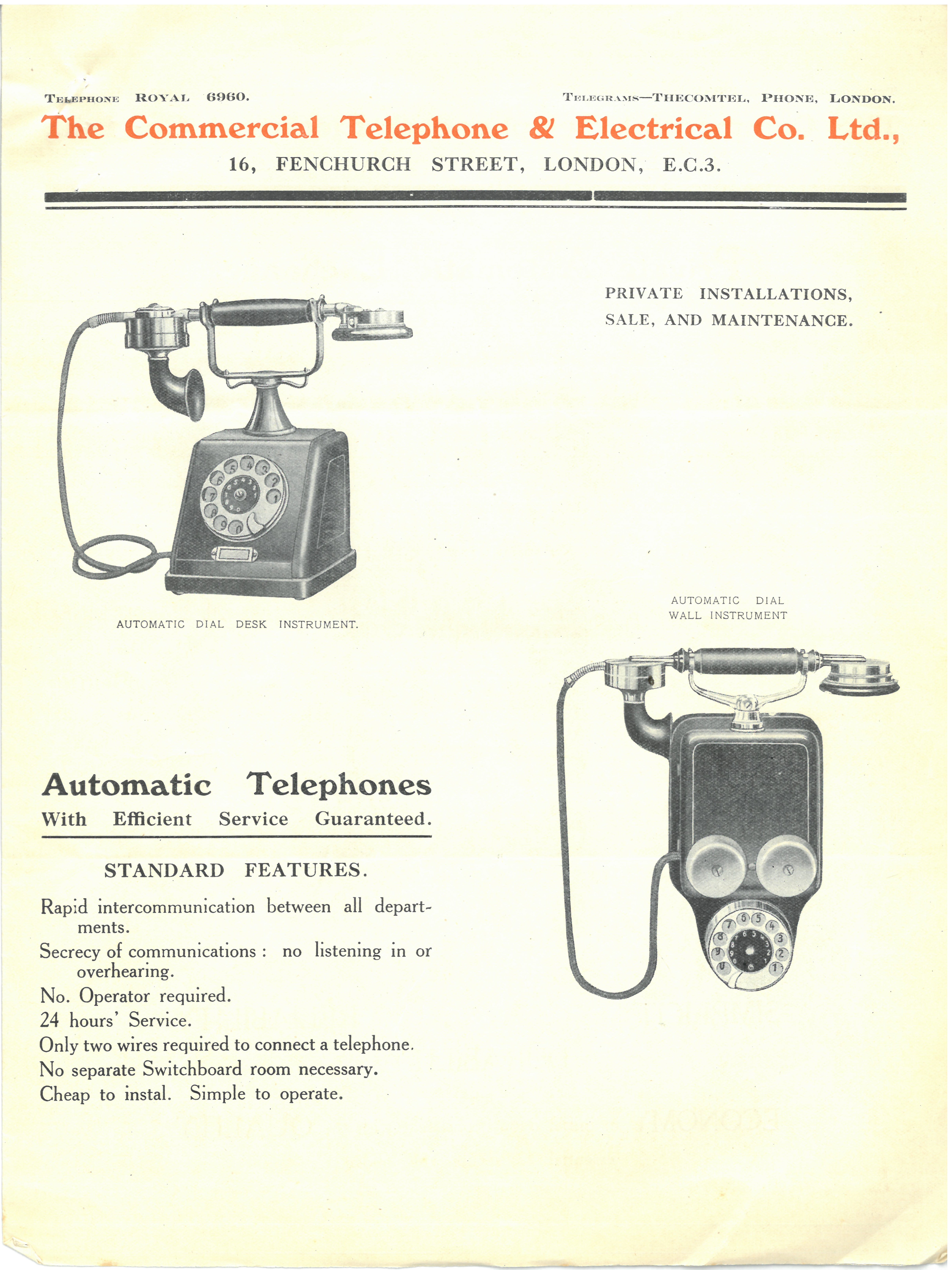
Extract of a brochure promoting the automatic telephones supplied by the Commercial Telephone & Electrical Company, 1926 (MT/4/1/12/5/38)
Similarly to modern telecommunication devices, analogue telephones in those days came in a multitude of style, ranging from the ‘candlestick’ desktop models, those with a carrying handle to wall-mounted ones. Advanced internal telephone systems were also being marketed as a solution to business operation needs. One such example was the dictograph system, which ran on several radio-like telephones fitted with a dial pad and a receiver. By picking up and transmitting sound form one station to another, the system allowed conference calling with callers at several locations. This feature made the dictograph a useful addition to a range of workplaces from chambers to theatres and banks to factories where inter-departmental communication was common.
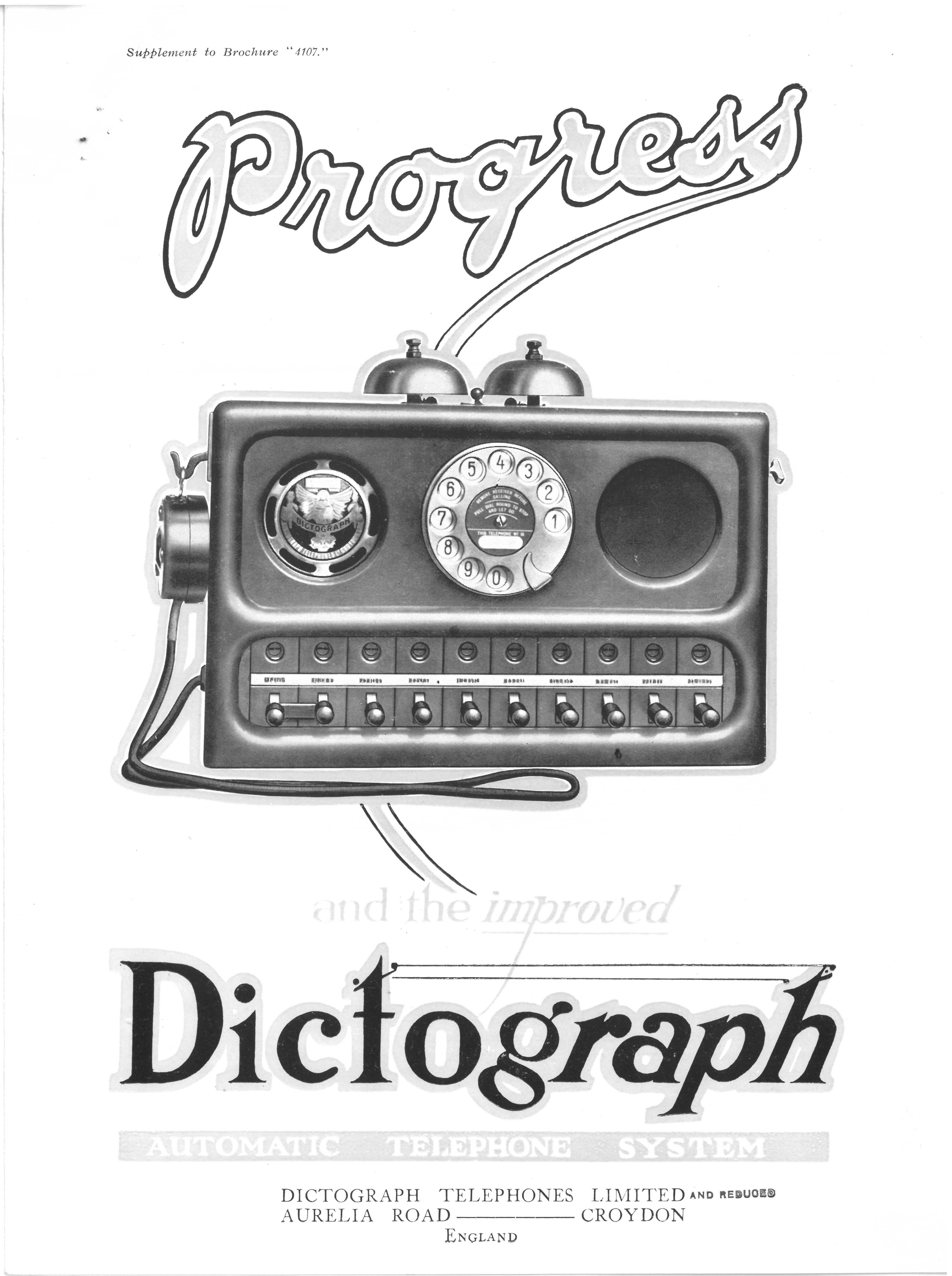
A leaflet advertising dictograph, an automatic telephone system, 1926 (MT/4/1/12/5/38)
Although no such records have survived, it doesn’t take a great deal of imagination to believe that these technologies would have been considered or even adopted by the Inn given its growing reliance on telephone communication. This is reflected in the Inn’s rising expenditure relating to telephone service: the Treasurer’s receipts show that in 1929 the Inn occupied a total of five telephone lines, amounting to a quarterly expenditure of £16.7.5, while two decades earlier only a minimum annual service charge of £1.10.0 was paid, suggesting a much lower usage.
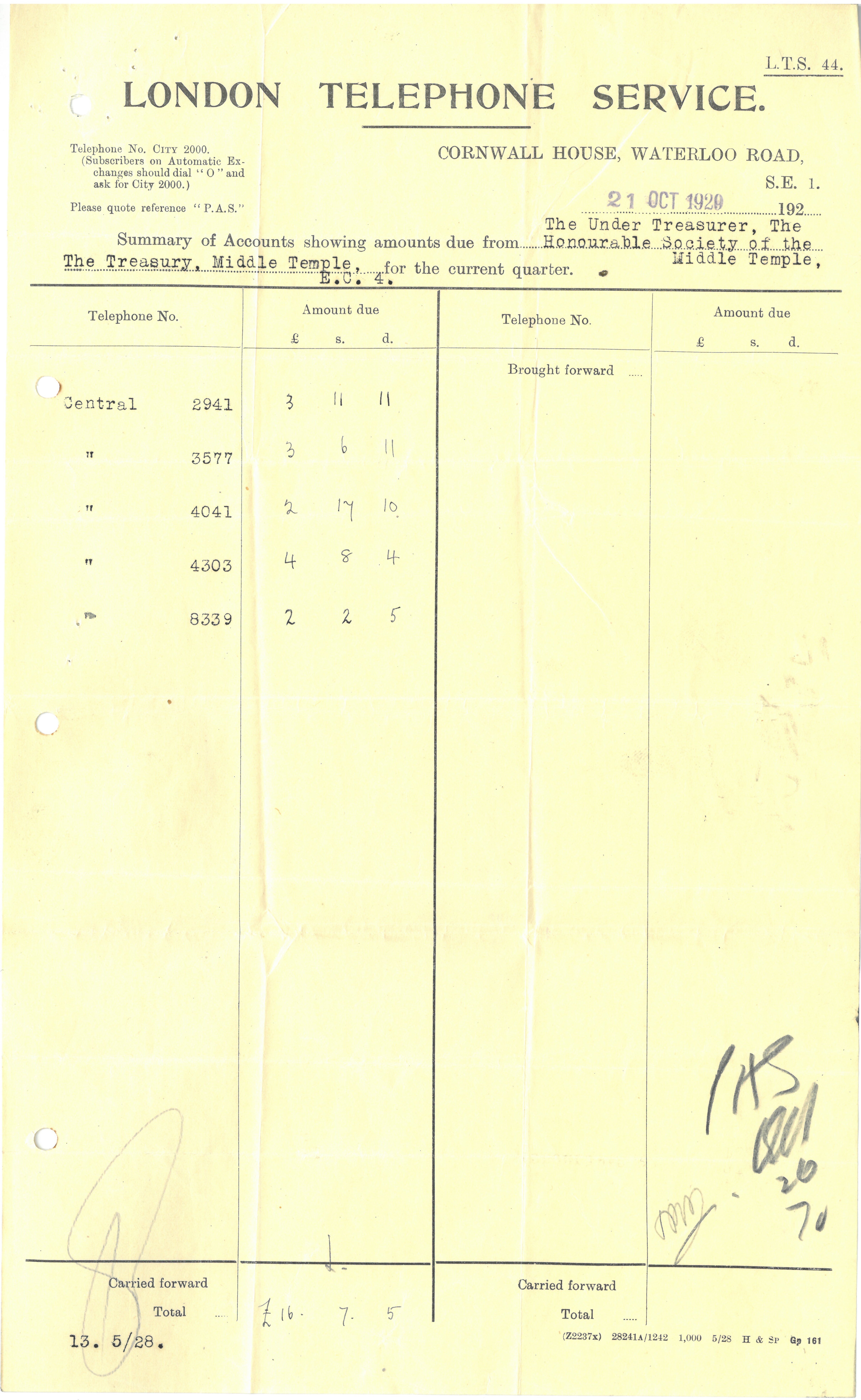
Summary of accounts showing amounts due for telephone service for a quarter, 1929 (MT/2/TRB/286)
All these testify to a flourishing era of telecommunications that would go on to impact the way we communicate for many decades, and still does. In a day and age where a telephone device could perform so many newfangled functions, it is easy to forget the one task for which it was originally conceived: making calls. While this has been gradually superseded by other communication channels such as instant text messaging and social media posting, the sound of a ringing telephone, dwindling but persisting, continues to reverberate around us, connecting callers both close and far.